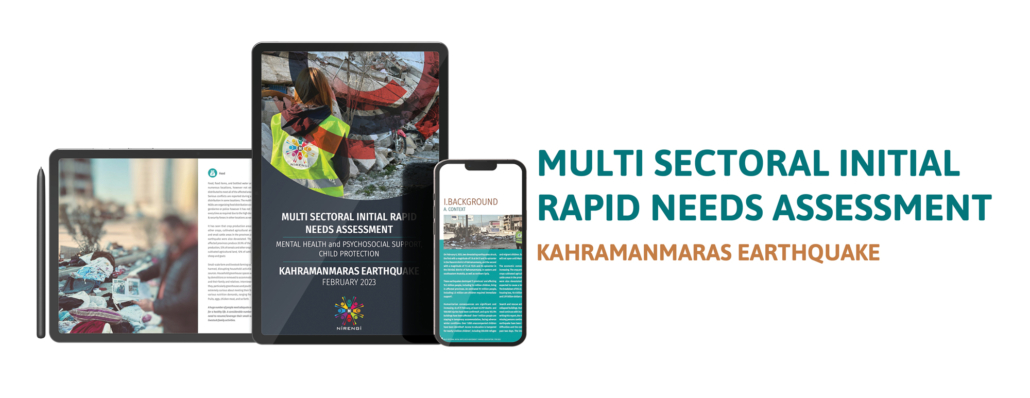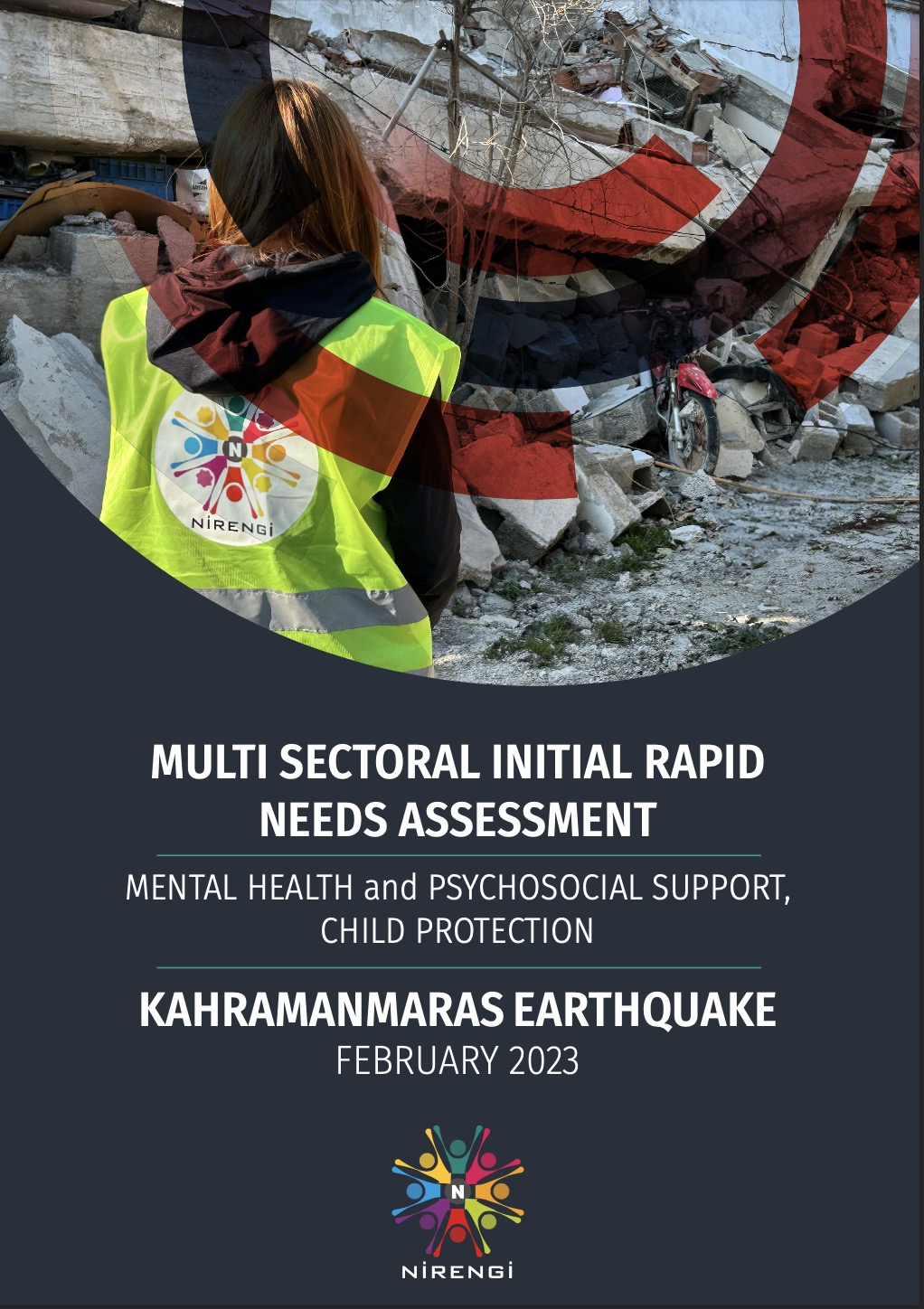MULTI SECTORAL INITIAL RAPID NEEDS ASSESSMENT
-MENTAL HEALTH and PSYCHOSOCIAL SUPPORT & CHILD PROTECTION –
(KAHRAMANMARAS and HATAY)
On February 6, 2023, two devastating earthquakes struck, the first with a magnitude of 7.8 at 04:17 and its epicenter in the Pazarcık district of Kahramanmaraş, and the second with a magnitude of 7.5 at 13:24 and its epicenter in the Ekinözü district of Kahramanmaraş in eastern and southeastern Anatolia, as well as northern Syria.
These earthquakes destroyed 11 provinces[1] and affecting 15.2 million people, including 5.4 million children, living in affected provinces. An estimated 9.1 million people, including 2.5 million are children required immediate support[2].
Humanitarian consequences are significant and increasing. As of 21 February, at least 42.310 deaths[3] and 108.068 injuries have been confirmed[4] , and up to 105.794 buildings have been affected[5]. Over 1 million people are staying in temporary accommodation, facing adverse winter conditions. Over 1.858 unaccompanied children have been identified[6]. Access to education is hampered for nearly 4 million children[7], including 350.000 refugee and migrant children. Schools in the impacted provinces will not open until March 1st.
The economic consequences are significant and increasing. The crop production areas, cereals, and other crops cultivated agricultural areas, livestock and small cattle areas in the provinces affected by the earthquake were also devastated. Roughly, this earthquake is expected to cause a total of $84.06 billion in damage. The breakdown of this is as follows: 70.75 billion dollars of housing loss, 10.4 billion dollars of national income loss and 2.91 billion dollars of loss of working days[8].
Search and rescue activities are still ongoing in the collapsed buildings. Humanitarian assistance for those in need continues with increasing momentum.
At the time of writing this report, the number of casualties, injured, and missing persons continues to rise and responses to the earthquake have been insufficient due to coordination difficulties and the continuation of aftershocks in the past two days. The immediate needs of the affected population include access to tents with sufficient shelter materials; clean water; heating; latrines (separate for men and women), sanitation; garbage collection; food and baby food; undergarments; sanitary napkins, and diapers. In addition, protection and security is problematic in some settings.
With only the earthquake, there are no reliable, certain reports on the number of dead, injured, and missing people.
In response to the earthquake, Nirengi conducted a rapid needs assessment in Kahramanmaraş and Hatay to gather information on the immediate needs of the affected population. The results of this survey will be used to inform and guide the response efforts of aid groups in the region, ensuring that the aid provided fulfills the needs of the affected population. Nirengi focused mainly on the mental health and psychosocial support (MHPSS) and child protection (CP) sectors when conducting the multisectoral needs assessment in two provinces.
Assessment Aim
The goal of the assessment was to gather information on the current situation in the affected area and determine the most pressing needs of the affected population. In addition to provide a foundation for humanitarian organizations to plan and implement assistance programs.
Assessment objectives
The primary objectives of this mental health and psychosocial support (MHPSS) and Child Protection (CP) rapid situational analysis are to:
- obtain an understanding of perceived and identified MHPSS and CP needs among earthquake affected people and related public agencies.
- inform MHPSS and CP actors of critical MHPSS and CP needs in Kahramanmaraş and Hatay.
- provide recommendations to support the development of relevant MHPSS and CP programming to address the needs of earthquake affected people.
The Multi-Sectoral Rapid Needs Assessment Report, which compiles the findings of the Psychosocial Support Rapid Situation Analysis and Needs Assessment study we conducted in Hatay and Kahramanmaraş from February 12 to 15, has been published.
Content
I. BACKGROUND
- Context
- Assessment objectives
II. METHODOLOGY
- Target population
- Assessment tool
- Data collection
III.RESULTS
- Demographic data of assessment respondents
- Living conditions
- Psychological and psychosocial needs
- MHPSS capacities and resources
- Community source of support
IV. KEY FINDINGS and RECOMMENDATIONS











